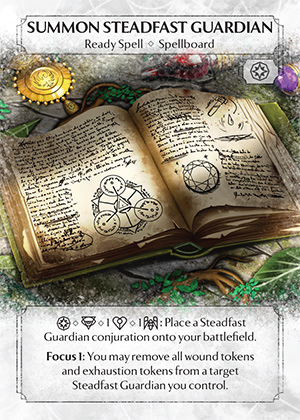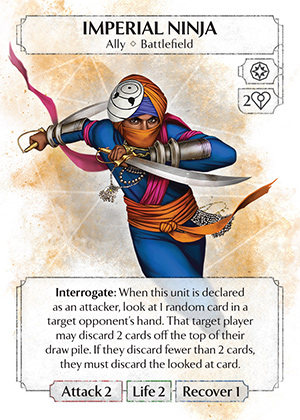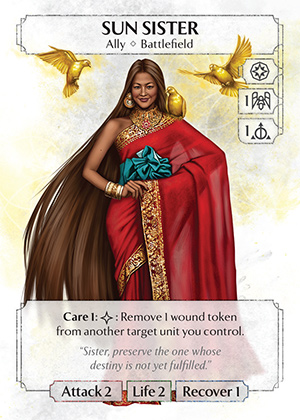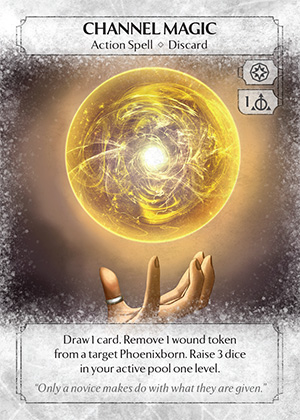Guide for The Goddess of Ishra against the Corpse of Viros
By Archivist
If you've looked at Jayson's guide, or been on the Discord at all, you've probably heard that Astrea's original deck is one of the hardest decks to pilot against the Chimera. That's entirely true. As such, this guide is for those brave souls who want to make a go of it, and add the deck to your wins.
While Astrea does have a second unique card, this article assumes you have the bare minimum to play the Goddess of Ishra deck: the deck itself, some divine dice (or substitutes), the Master Set (for the charm dice), and the Corpse of Viros. If you also have the Blight of Neverset, the games against the Chimera become much easier thanks to Judgment. It is, however, winnable without.
Preface: Rules interactions
The Goddess of Ishra has a few strange rules interactions with the Chimera, and one of those should be cut from your deck in favor of Channel Magics (more on that in a bit). Two others deal with Light Bringer, and Imperial Ninja.
For the Light Bringer, the turn after it comes into play, the Chimera must attack if able. As per rules in the Red Rains rulebook on page 15, status abilities are still resolved, then, the Chimera takes the Attack main action, as though it had no face down aspects. If the Chimera has no aspects capable of attacking (either because the face up ones are exhausted, or it has no face up aspects at all), it takes a turn as normal, rolling or passing based on the number of face down aspects.
Ninja is a little trickier because there's two components to it, but still pretty easy. The first one is the choice of hand or deck; as a player, you choose. Given Astrea's difficulty, it's probably easier to look at the top 5 cards (the created hand - the other component to the Ninja's complexity - as per Red Rains rulebook, page 16), and decide if there's 1 particular aspect that will be problematic coming up, or if you want to just discard 2 aspects. I personally roll the behavior die, with odd being the discard from hand, and even being discard from deck. But you choose when you play.
The last ones all deal with Concealed, on Lurk. It does not protect against Kneel or Unit Guard (they don't target), nor Light Bringer's Infatuate (which targets the player), but does protect against Astrea's Beguile. Once Lurk is exhausted (via Kneel or attacking), it can be attacked, hit by Mark of the Goddess, or otherwise dealt with.
Astrea's Strategies
Unlike with the two Master Set decks, I'm going to focus on Astrea's deck's strategies instead of the individual cards. Individually, they're pretty abstract, and hard to understand in terms of game goals; as a strategy, they're much easier to understand.
One of her strategies is that of "discard from hand." Unfortunately, against the Chimera, the power of that tactic is dramatically reduced, since the Chimera never runs out of cards to play. While you can still accelerate a fatigue-based win with these plays, the strategy is definitely one of the weakest strategies that exists against the Chimera, since it doesn't have the same limitations a human player does. For example, it will never activate the side action of a Weeping Spirit, and it doesn't care to, because it doesn't have a battlefield limit. Similarly, Imperial Ninja isn't likely to hit a singular key card that would cripple the Chimera if discarded; at best, you'll weaken it for the next round. And then there's Kneel and Beguile, neither of which cause the Chimera to play more cards from hand to have units that can attack. So this strategy is one you should ignore.

Her other strategy is controlling combat. Not just the outcomes, as cards like Royal Charm affect, but also what can attack and when. Kneel, Beguile, and Devotion stop units from swinging, Light Bringer forces the attack, and Steadfast Guardian dictates what actually gets attacked (usually Steadfast). And then Sun Sister can clean up the wounds on any of Astrea's surviving units, except herself. Speaking of surviving units, Call to Action can give one another attack, and you will have no trouble hitting the trigger condition for the reaction. Lastly, even Mark of the Goddess can be considered dictating an attack - just using an opponent's unit for the attack instead of one of hers. This strategy does work against the Chimera, even if the cards themselves appear quite weak at supporting it. It's also a lot harder than many of the other strategies that don't have the same level of combat control, because the decision making is more detailed and the units are on the small side.
Since hand denial is out, you want to put Channel Magic into her deck, replacing the near-useless Summon Weeping Spirit. While you can use the Spirits on your own side to absorb an attack every so often, overall, The Goddess of Ishra would rather have more Royal Charms and more Summon Steadfast Guardians than Summon Weeping Spirits, at least against the Chimera. Having the extra life point per Channel Magic drawn doesn't hurt, and probably the best thing about it is that it raises 3 dice up one level, which helps Astrea trigger dice powers more often, giving her greater control over combat outcomes.
As mentioned earlier, if you own Blight of Neverset, you can replace Mark of the Goddess with Judgment, and, well, no one will judge you for it. And, let's be real: if you're using Print on Demand to get The Goddess of Ishra, you probably want 3x Judgment over 3x Mark, anyways. You'll use Judgment in PvP and PvE; Mark sees much less play.
Lastly, Astrea's allies are limited in number; a mere 6, with no way to bring them back in deck or dice. As an option, you can swap out 1 die for a ceremonial die. This isn't something I really recommend, as she wants to minimize meditating in order to not lose Summon Steadfasts, and with a single ceremonial, you'll probably be meditating to get that power side.
The First Five
The Goddess of Ishra is somewhat of a rarity in that the strategy needed in the First Five is actually different between the Corpse's aspects. However, that difference comes down entirely to 1 card and how you spend your last few dice.
The base of the First Five is her two summon spells: Guardian and Light Bringer. Since both of these are key to her deck, you want a copy of each. Additionally, she does want more than just two 1 attack units, so Ninja and Sun Sister are also added to the hand. With these four cards, and Astrea's ability, that puts you at using 3 divine class dice, 3 charm class dice, and 2 basic dice. You have 2 dice left.
So what to do with them? There's 6 cards left you can choose from, and only 1 of them will actually cause you to use all your dice: Devotion. That does remove an attacker from your field, and Astrea really wants those early on, making it a subpar choice. The remaining cards all cost 0 or 1 die (Royal Charm is the 0 cost), but all of them also tend to further her strategy.
This is where the differences between the aspects comes in. Against Fury, Mark of the Goddess is effective removal against all the 2 bloods, because they all have 3 or more attack, and can be targeted before they attack. Mark of the Goddess seems a logical choice here, and that would leave you with 1 die to use on dice powers (and it'd be your choice which die, since you have 3 basic costs in that hand). Your worst case scenario, that of a triple Iron Scales opener, is fairly rare, and if you're concerned about it, you can opt for a different card.
Shadow is somehow more resistant to Mark - Lurk can't be hit until after it has attacked (and is better removed by a Light Bringer or Guardian attack so as to minimize damage waste), and Constrict only deals 2 damage to another unit. Which means, for Shadow, you'd be hoping for a 2 or 3 Dark Descent opening for Mark of the Goddess to work. As such, I don't feel like there is a 5th card choice that stands out from the rest. The presence of Constrict means you are likely to lose the use of something - possibly Astrea - and wind up with more "spare" dice to use on dice powers, which makes Royal Charm a risky choice. Devotion's abilities would get shut off by Constrict, but you at least still get to use the dice (and the stat increases), but, unless you rush the Devotion play, Constrict is likely to hit something else anyways. Channel Magic gives you a random card, but also probably puts you into the position of using dice powers or having "dead" dice (you could draw a Kneel you can't use well, for example). And, Kneel in round 1 is usually not a great pick.
This leads my preference to be Channel Magic. While having the spare die isn't ideal, one thing Astrea does want is more summons, more often. Getting 2 or even all 3 of the Steadfast Guardian summons boosts her game by a surprising amount. Even getting more Royal Charms helps her game; making her dice go further is always good, as is having additional targets for Constricts that don't take away from your removal or unit production.
One final option is taking a Kneel into the First Five, and then discarding it before round 1 and hoping for a random draw that's better. This gets into some rules trickery, but there are similar strategies used in PvP to get a "6th" card in the Five. In this case, since you have no way to recover the Kneel, it functions more as a "removing it from the deck so you don't draw it later" action. I don't actually recommend doing it, but you should know that it is an option.





My recommended first five
The Corpse of Viros
The breakdown for the Corpse's aspects interact differently with The Goddess of Ishra than against most other decks.
Grunts: the aspects you can hit last. Steadfast Guardian can usually soak them and stick around for another block or guard. For Fury, this is Rampage and Whiplash. For Shadow, it's Regenerate.
High Priority: these aspects should take the focus of your resources, so you have a better chance of surviving. Using Beguile on one of these is perfectly acceptable, so you can destroy it without losing any of your units. For Astrea, this list is Dark Descent in Shadow, and Frozen Fear and Hunting Instincts in Fury.
Annoying: the catch-all for everything else. For Fury, that's Iron Scales and Firebelly, and for Shadow, it's Lurk, Constrict, and Stormcall.

This is a bit of a different list than most other Phoenixborn, and that's somewhat due to Astrea's unique deck. Constrict and Iron Scales can be stifled by using Beguile, and then your attacks can focus on the bigger threats, while you chip away at these two with your units. If you have an empty board, you can also use a Light Bringer to force them to attack into it, essentially saving you a unit.
Firebelly is less of a threat here because the Guardian can get a divine die and block and kill it, and still be able to take 1 more wound, even before a Devotion. Additionally, Sun Sister can remove the wounds your units take from Firebelly's ability, preserving your units for longer. And, of course, the aforementioned Devotion can be put onto any unit to give it survivability even after blocking the Firebelly.
Lurk can be guarded against with the Steadfast Guardian. And then you can take it out with a Light Bringer without losing excess damage, but be careful about when that Light Bringer is played. Or, if you get somewhat lucky, you might be able to double Devotion a Guardian and block and counter the Lurk. But then you're likely to lose the Guardian and both Devotions to almost anything, even with a Sun Sister removing wounds.
Stormcall has trouble eating through Astrea's life, and, since she has two attackers capable of taking it out and surviving, shouldn't be much of an issue. What's more, you can slap a divine die on your other two units, and then they are strong enough to take out the Stormcall. Better still, you can time a Light Bringer to force the Stormcall into attacking when you want it to, ensuring you have a unit ready to counter and probably kill it.
Frozen Fear is probably your biggest worry aside from Dark Descent. Frozen Fear can exhaust Astrea, removing one of her primary ways of keeping herself and her units alive. You'll also usually want to boost a Steadfast Guardian with a divine die to be able to block it, as your allies are so few. Also, you can target it (or an Iron Scales) with a charm die to keep it from taking out an unwounded Guardian.
Dark Descent can also remove your units at a high rate. Astrea can have counterplay, though: if your leftmost unit is unexhausted, Call to Action can unexhaust the unit Descent would try to invalidate, but if the unit was already exhausted, Call can't do anything about it.
Those two are in different aspects, so if you're playing them unmixed, you'll only have one set of them to deal with per game.
Perhaps the most interesting thing is that, for The Goddess of Ishra, the harder aspect is actually Shadow. A lot of Fury can be handled through Beguile and careful attacks and guards, and Mark kills just about everything; Shadow removes a bit of that control due to the Dark Descents, and early Constricts can hurt Astrea more than a lot of other Phoenixborn because she is reliant on Beguile and her summons more than most of the preconstructed decks, which can get by without their Phoenixborn ability round 1. And there isn't a good First Five for her that can handle a double or triple Constrict round 1.
Round 2 and beyond
Most hands you draw in round 2 will work in some way, but you will occasionally get hit with a hand full of Royal Charms and Call to Actions, without enough units to use them on. Since Astrea plays a defensive slow game, this will still work for her, as she'll likely have multiple turns after the Chimera has finished. She'll also probably take a fair chunk of damage that round, so you should mitigate that the best you can with the Light Bringer, a well-timed Beguile, and the Steadfast Guardian. The next few rounds might be a little more strained, but they're manageable.
Unlike a lot of decks, The Goddess of Ishra will probably end the game in round 4, even against Standard 1. This additional round is usually a matter of cleaning up, as you should have control of the game at that point, and simply were not able to produce enough damage to the Chimera to actually close the game out in round 3.
This longer game closure also means the Corpse is more likely to hit phase 3 than against most other preconstructed decks. This is no big deal, as Astrea's limited battlefield is a boon here, preventing you from losing too many units to the extra Ultimate.
As far as deck picks, Astrea has a lot of good directions to go in, even with just the Master Set. Aradel can give her Mist Spirits and Typhoon, both of which are good at dealing that last damage needed to some aspects, even though they're not in her colors at all. Coal's Hammer Knight is a great Call to Action target, attacking an exhausted (perhaps Beguiled) unit and then unexhausting to counter another. Anchornauts are a good pick, too, as the divine power can also give them 1 attack and make them worthwhile. Noah's False Demon works well with Beguile, too, and he has Bound Soul, which could help with returning the Ninjas and Sisters. Saria can complement the fatigue plan with Enchanted Violinist, and also provide a heavy hitter in Rose Fire Dancer.
All in all, I recommend trying The Goddess of Ishra once or twice. She's a good way to learn to manage what seems like inferior resources in a demanding environment, and those lessons work for all other decks.

No comments to display
No comments to display